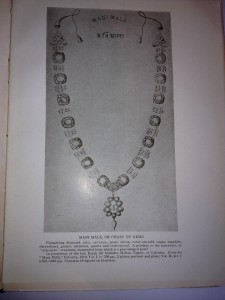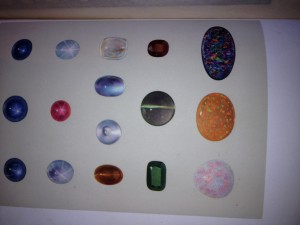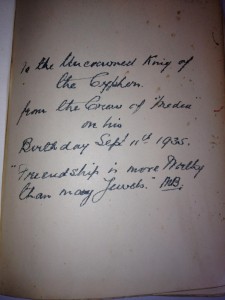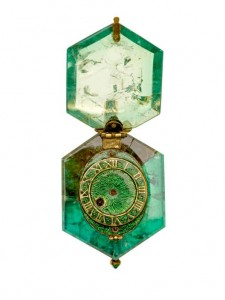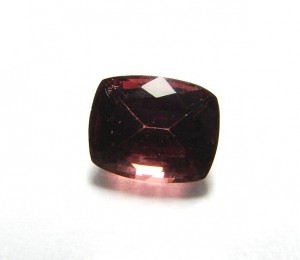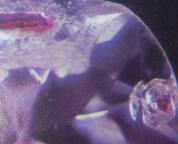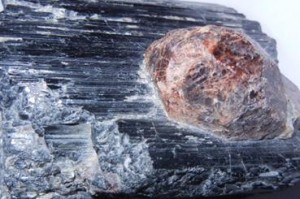1) Coloured diamonds (preferably with no modifying tint), 3.00 carats and above
2) Type IIA D flawless, triple ex stones above 10.00 carats
3) Natural pearls of good shape, colour, lustre and size
4) Signed period jewels by all the great houses
5) Antique jewels in superb condition, preferably with historic provenance
6) Sapphire and rubies with no heat treatment
7) Old mine emeralds with minor or no oiling
Author: Steven Jordan
So what’s selling well in the high end auction field?
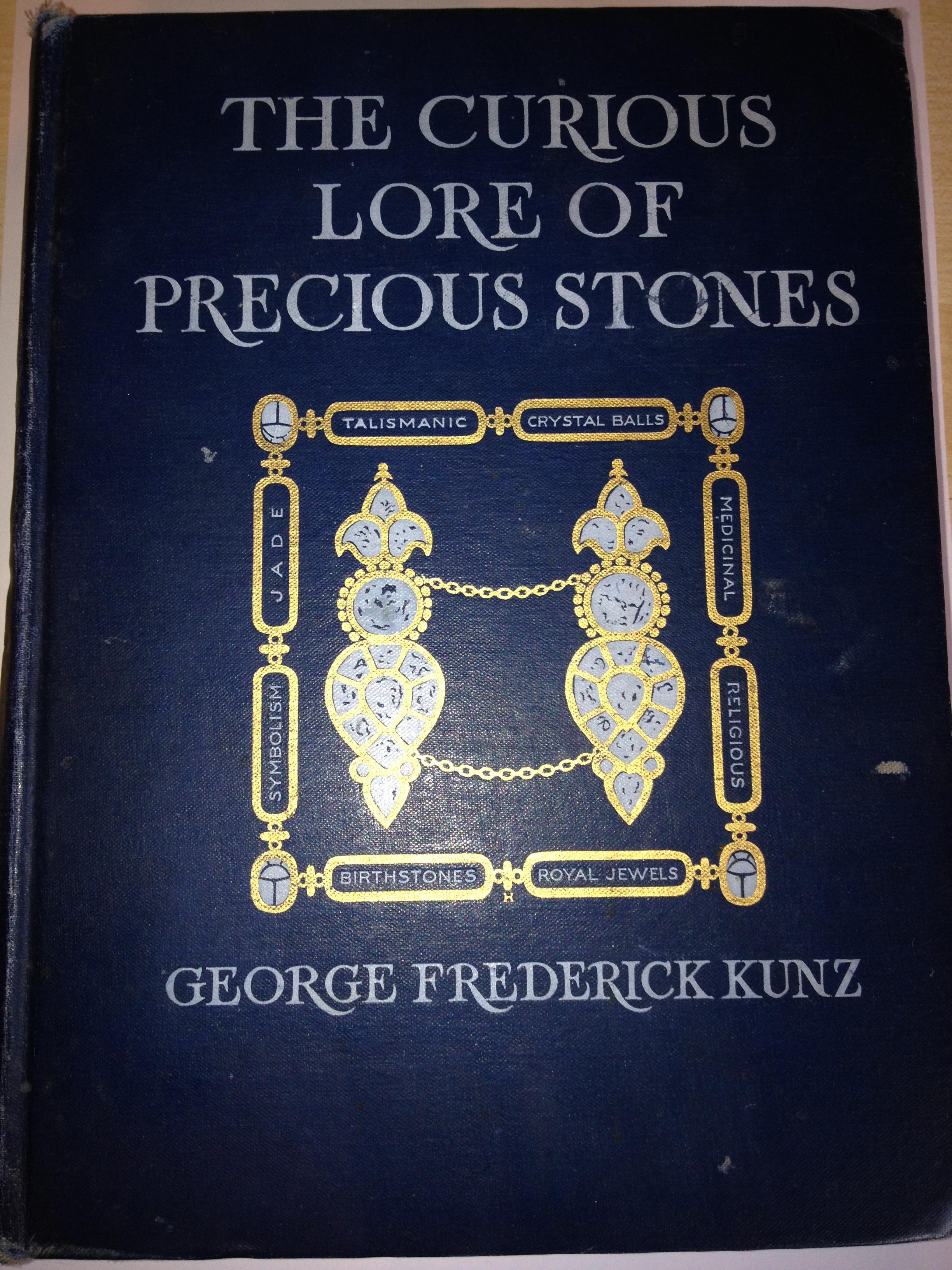
THE CURIOUS LORE OF PRECIOUS STONES (1913)
THE CURIOUS LORE OF PRECIOUS STONES (1913)
By George Frederick Kunz
From time to time, in a quiet moment, I select a book to read. I particularly like Victorian and early twentieth century adventure tomes. It’s the boy in me that has led to a small collection of the H Rider Haggard adventures for example.
In the gemmological field there are a number of heroes whose escapades would give Allan Quatermain a run for his money, or gold.
Jean-Baptiste Tavernier comes immediately to mind. The modern version double volume of his travels in India I have in my collection.
However today I reach for my 1913 copy of The Curious Lore of Precious Stones by George Frederick Kunz. Tattered, bruised, falling apart it still offers an insight into the state of jewellery history and gemmology over a hundred years ago. For me it is a tangible link with the past with two of my favourite subjects.
Kunz was born in New York City 29th September 1856. He had a very keen interest in minerals from an early age and by his teens had a collection of over four thousand items. He did not attend college but taught himself mineralogy from books and carried out field research.
It was his expertise in mineralogy that secured him a position with Tiffany and company. His knowledge, dedication and enthusiasm saw him become vice president by the age of just twenty-three.
His name continues in the world of gemmology today due to his discovery of a variety of Spodumene now known as Kunzite.
The book covers a myriad of subjects. From superstitions associated with particular gems, religious uses and therapeutic properties.
To quote from the text, ‘Rock crystal also was found to possess a strongly stimulating influence, for if put in the hand, it aroused the subject from half slumber, and if placed on the pit of the stomach, it had the power to awaken the seeress from a somnambulistic trance, while at the same time an aromatic odor (sic) was diffused around’.
Of amulets he wrote much, ‘One of the special uses of amulets was for seafaring people…all who went down to the sea in ships were greatly in need of protection from the fury of the elements…’.
Kunz continues to list the seven amulets describe by a Greek lapidary. Carbuncle and chalcedony, to protect a sailor from drowning. Rock crystal, associated with ice. Aquamarine, to banish fear. A type of agate with a white centre, to protect against the evil eye. Coral attached to the prow of the ship, to protect against the wind and waves. A type of banded agate, known as ophiokiolus, it’s snake like appearance protected against the surging ocean. A type of Jet, known as opsianos, was said to protect all that journeyed by sea or river.
The book is full of truly bizarre images. One of my favourites is that of a type of mythical airship ‘..above the figure were to be set coral-agates (sic) , supposed to possess such magnetic powers as to keep the craft aloft’.
There are some fantastically colourful plates throughout the book, particularly emphasizing the diversity of gemstones.
For those interested in the science of gemmology there are some interesting, and slightly frightening experiments noted. The phosphorescence of a diamond exposed to ultra violet light comes to mind. I can’t imagine that the eye safety procedure that we adhere to today was ever followed then.
One outstanding colour plate, and one I refer to in talks, is that of the Maharaja Runjit Singh, Ruler of the Punjab, 1791 to 1839. The Maharaja is seated against a large red cushion, around his neck and at his waste are rows of large natural pearls. In his hand he holds a necklace of emerald beads, said to protect against poison. Sadly it is believed that he, and his successor, died of poisoning. The Maharaja was the founder of the Sikh Empire and at one time the possessor of the Koh-i-Noor diamond.
The book is full of intrigue and mystery. The principal mystery for me is who owned the book in 1935. Whoever he was his friend called him the ‘Uncrowned King of Cyphers’. And signs off with a sentiment that I agree with ‘Friendship is more worthy than many jewels’.
Steven Jordan FGA DGA
MD Hawksworth Valuations Limited
www.hawksworth-valuations.co.uk
Share and Enjoy

THE CHEAPSIDE HOARD exhibition at the Museum of London
The Cheapside Hoard….London’s Lost Jewels
Finally last week I managed to schedule a visit to the London Museum’s exhibition of the Cheapside Hoard.
For the first time ever the hoard could be viewed in one location. The exhibition was timed to coincide with the one hundredth anniversary of the hoard’s first public showing.
The history of the hoard and its subsequent loss in the cellar of premises in Cheapside is open to discussion. It is likely to be the stock of a goldsmith, Cheapside being the area for gold smithing during the Elizabethan and Stuart period. Its modern history dates to 1912 when a gang of labourers in the City of London unearthed the cache of gemstones and jewels. It is thanks however to the legendary figure of Stony Jack (George Fabian Lawrence) who, with his familiarity of the City navvies (and the public houses they frequented), was able to retrieve the hoard.
The current exhibition begins with the history of gold smithing in the City, with a representation of a Stuart period workshop. Many of the tools on display would be familiar to the goldsmiths of today.
Displays of chests, similar to which the jewels had been found in, Grimm’s illustration of the coronation procession of Edward VI (1547) through Cheapside showing the goldsmiths’ windows full of treasure and displays of gold testing equipment complete the first section. If I hear someone say again “…that’s where the expression ‘up to scratch’ comes from” I shall go mad.
The exhibition follows around to reveal the main room with cabinets full of wonderful Elizabethan/Stuart period jewels.
My favourites; the enamel long chains, the salamander brooch and of course the emerald watch. The watch is set into a complete emerald crystal. No mean feat today let alone four hundred years ago!
Hazel Forsyth, Senior Curator of the Medieval and post-Medieval Collections at the Museum of London, must be congratulated on bringing together this incredible exhibition of the art of renaissance gold smithing in England in such an informative and interesting way.
I was very fortunate a few years ago to attend a private talk by Hazel at Goldsmiths Hall, I was Senior Valuer London Assay Office at the time. Hazel demonstrated the fantastic scope of items in the collection and the various analytic processes that were being used. It was a good insight into the steps that are involved and the effort that’s involved in putting on such an exhibition. Of particular interest was the scanned images of the Ferlite watch.
The exhibition ends on the 27th April 2014. I can do no more than heartily recommend a visit before the Cheapside Hoard is returned to its various homes.
I would also recommend purchasing Hazel’s wonderfully illustrated book of the exhibition.
UNTIL 27th April 2014
Steven Jordan
steven@blog.hawksworth-valuations.co.uk
Share and Enjoy
Kalahari Valentine
When a young Kalahari bushman seeks a bride he skillfully makes a miniature bow, quiver and arrows. The bow not being much larger than a pencil!
When spying his intended bride he shoots an arrow at her, in front of his clan.
If she accepts this rather precarious proposal the girl picks up the arrow.
However she has the choice to refuse his advances by simply walking away.
As these miniature quivers have more than one arrow the young bushman has the option to pursue another.
This really is Cupid in action.
Happy Valentines day
Share and Enjoy
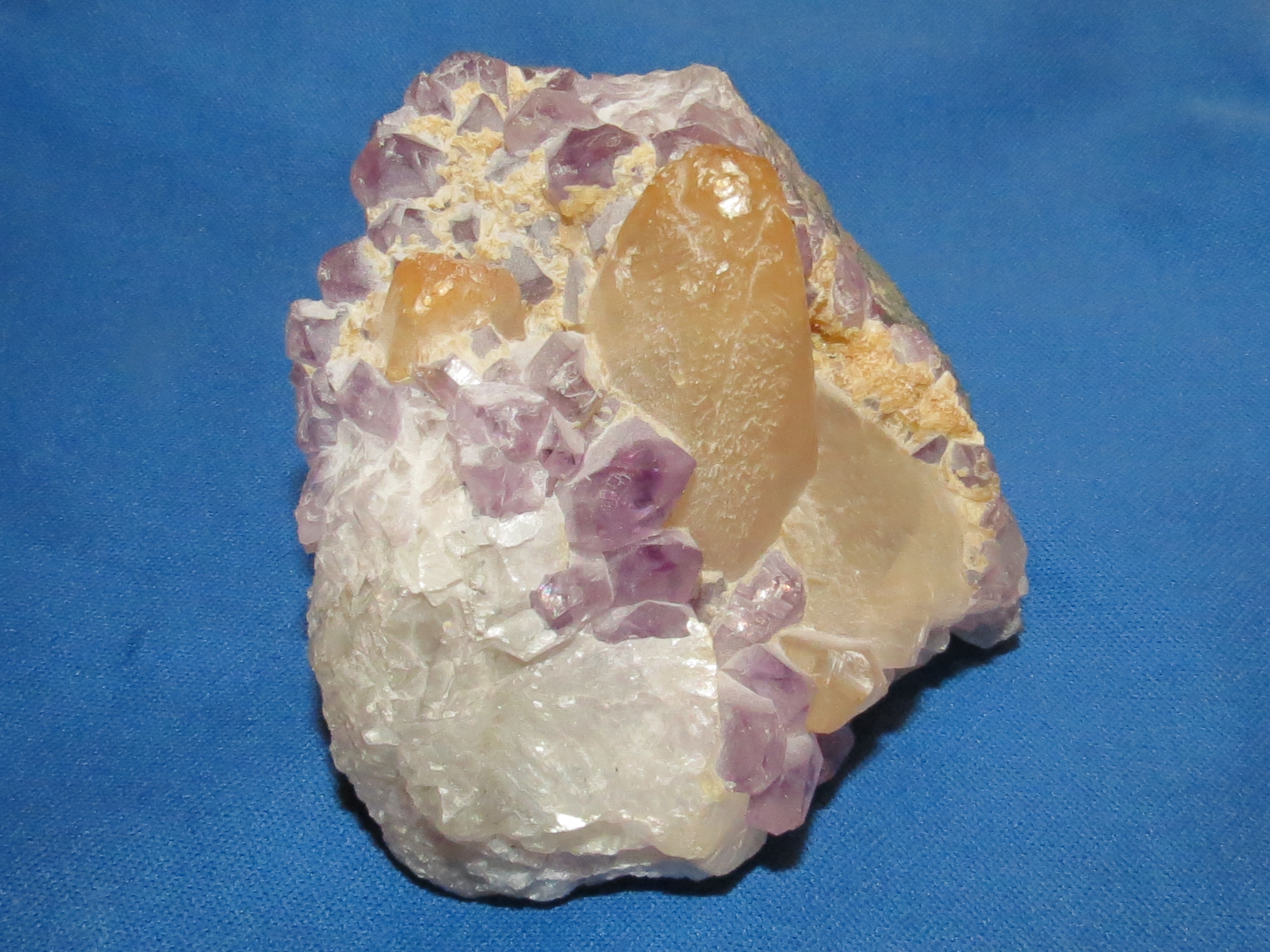
AMETHYST, the birthstone for February
Amethyst, that wonderful pale lilac to deep reddish purple variety of quartz, occur in vesicles in volcanic rocks as well as pegmatite and hydrothermal veins.
Its occurrence is vast, across much of the world. From Siberia to Europe, South America, Asia and Africa. Principal sources are Minais Gerais (Brazil), Zambia and South Korea. You can even find amethyst in the UK. Look for water worn pebbles on Scottish and Cornish beaches.
The name is derived from the Greek amethystos, meaning ‘not drunken’. It was believed that it protected the wearer from drunkenness. In mythology Dionysus sought revenge on mankind for an insult he had received. A young maiden, called Amethystos, became his intended victim. Dionysus created tigers to carry out the deed but Artemis intervened by turning Amethystos into a white quartz stone. Dionysus wept on seeing the beautiful statue, his wine charged tears turning the stone purple.
By coincidence some amethysts contain healed fractures called ‘tiger stripes’.
It was favoured by the clergy, roman emperors and medieval soldiers who believed that wearing an amethyst would enable them to remain cool headed.
Amethysts other attributes include piety, humour and wit. It is said to sharpen the mind and protect the wearer against magic.
The Science
Amethyst is a crystalline variety of quartz. Silicon dioxide, owing its colour to manganese.
Crystal system: Trigonal
Hardness: 7
Specific gravity: 2.65
Refractive index: 1.544 to 1.553
Birefringence: 0.009
Can be heated to light yellow, reddish brown, green or colourless.
The light yellow heat treated type that resembles the quartz variety citrine does not exhibit pleochroism, whereas true citrine does.
Want to learn more about Amethyst? Then visit the Gemmological Association of Great Britain website for available courses www.gem-a.com
Steven Jordan FGA DGA FIRV FNAJ
Fellow of the National Association of Jewellers Institute of Registered Valuers
For jewellery and silver valuations: steven@blog.hawksworth-valuations.co.uk
Share and Enjoy
London Fix Historical gold – result
During a recent jewellery valuation visit to a property I was confronted with a very recently purchased ring. The owner had been informed that as gold has dropped so dramatically recently it was a good time to purchase. Absolutely, for a bespoke ring or one that had been very recently obtained from a supplier. However it is not a general practice of UK jewellers to adjust stock prices daily to reflect the changing gold FIX. The exception being UK Asian jewellers who some, but not all, adjust retail prices according to the gold FIX.
However gold is just one component of an item of jewellery. Gemstones fluctuate in price according to availability and trends too.
The quality of coloured gemstones are graded as commercial, good, fine or extra fine. The grade is primarily associated with colour, cut and clarity grade for type.
The Gem Market News in the November/December 2013 edition of The GemGuide states the following:
An extra fine 3ct emerald would be as follows per carat: year 2000 $5,975, year 2005 $6,900, year 2010 $6,500, year 2013 $7,575
An extra fine 3ct pink sapphire would be as follows per carat: year 2000 $1,350, year 2005 $1,825, year 2010 $1,525, year 2013 $2,650
The value of jewellery is very fluid and is affected by a variety of aspects, from market trends, global economy and confrontations.
This is why it is so important to have jewellery valuations updated regularly to ensure full value replacement in the event of a loss.
Sources:
www.kitco.com
www.gemguide.com
Share and Enjoy
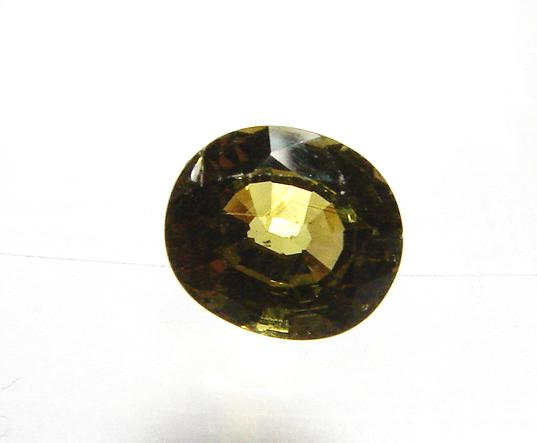
The Birthstone for January: GARNET
Garnets can vary from pink, through red, to orange, yellow, green and black. Recent finds have now added blue to the myriad of colours. So for someone with a birthday in January the choice of colour and colour combinations is vast.
I deliberately headed this blog with a green Mali Garnet to prove the point that the birthstone for January does not have to be red.
But what is Garnet?
What is its scientific nature?
What is its otherworld properties?
THE SCIENCE
Garnets are a very complex group of gemstones.
They are an Isomorphous series, ie they have the same crystal structure, cubic, but with varying chemical mix.
This continuous blend can, for example, create a mid way garnet type. For example the popular Rhodolite garnet above is a Pyrope-Almandine mix.
Garnets can appear as inclusions inside other gemstones, for example as in the image of a diamond below.
Most of the more common Garnets fall into two groups: Pyralspites and Ugrandites. Pyralspites are the aluminum Garnets and Ugrandites are the calcium Garnets.
Pyralspite Garnet Group: The Pyralspites include Pyrope, Almandine and Spessartine. The name Pyralspite comes from Pyrope, Almandine, Spessartite. This includes the vast majority of gemstone garnets. There is a complete solid solution series between Pyrope, Almandine and Spessartine. These Garnets are often mixed. Malaia is a Pyrope-Spessartine mix and Rhodolite is a Pyrope-Almandine mixture.
Ugrandite Garnet Group: The Garnets with the widest color range fall into the Ugrandite Garnet Group. are the calcium Garnets.The Ugrandites include Uvarovite, Grossular and Andradite. The name Ungrandite comes from Uvarovite, Grossular and Andradite. There is a complete solid solution series between Uvarovite, Grossular and Andradite. As with Pyralspites these Garnets are often mixed. Grandite (or Mali Garnet) is a mixture of Grossular and Andradite.
Garnet Physical Properties: General garnet composition: A3B2(SiO4)3, where Ca, Mg, Fe2+, or Mn2+ occupy the A site, and the B site contains Al, Fe3+ or Cr3+. Hydrous garnets may contain up to 8.5% H2O.
Chemical Composition:
Pyralspite Garnet Group
Almandine: Fe3Al2(SiO4)3
Pyrope: Mg3Al2(SiO4)3
Spessartine: Mn3Al2(SiO4)3
Ugrandite Garnet Group
Andradite: Ca3Fe2(SiO4)3
Grossular: Ca3Al2(SiO4)3
Uvarovite: Ca3Cr2(SiO4)3
There are far less common types, which are rarely if ever found in jewellery. There are even garnets from space, such as Majorite which was discovered in a meteorite.
With such a wide diversity in chemical composition other properties such as hardness are varied. The benchmark for hardness is MOHS scale. With Talc at 1 as the softest and Diamond at 10 as the hardest. The scale is (1) Talc, (2) Gypsum, (3) Calcite, (4) Fluorspar, (5) Apatite, (6) Orthoclase feldspar, (7) Quartz, (8) Topaz, (9) Corundum, (10) Diamond.
The most common Garnets have a hardness rating as follows: Almandine (7.5), Andradite (6.5), Grossular (7.0 – 7.5), Pyrope (7.25), Spessartite (7.25), Uvaroite (7.5).
If you are interested in the science of gemmology I can no more than suggest you attend some of the wonderful courses run by the Gemmological Association of Great Britain www.gem-a.com
THE OTHERWORLD PROPERTIES
Also associated with red garnets, in ancient times it was believed to remove anger.
George Frederick Kunz noted this in his wonderful book ‘The Curious Lore of Precious Stones’ (1913) that ‘the symbolism of color played a very important part in recommending the use of particular stones for special diseases’.
Share and Enjoy
The Cheapside Hoard
http://www.museumoflondon.org.uk/london-wall/whats-on/exhibitions-displays/cheapside-hoard-londons-lost-jewels/
Share and Enjoy
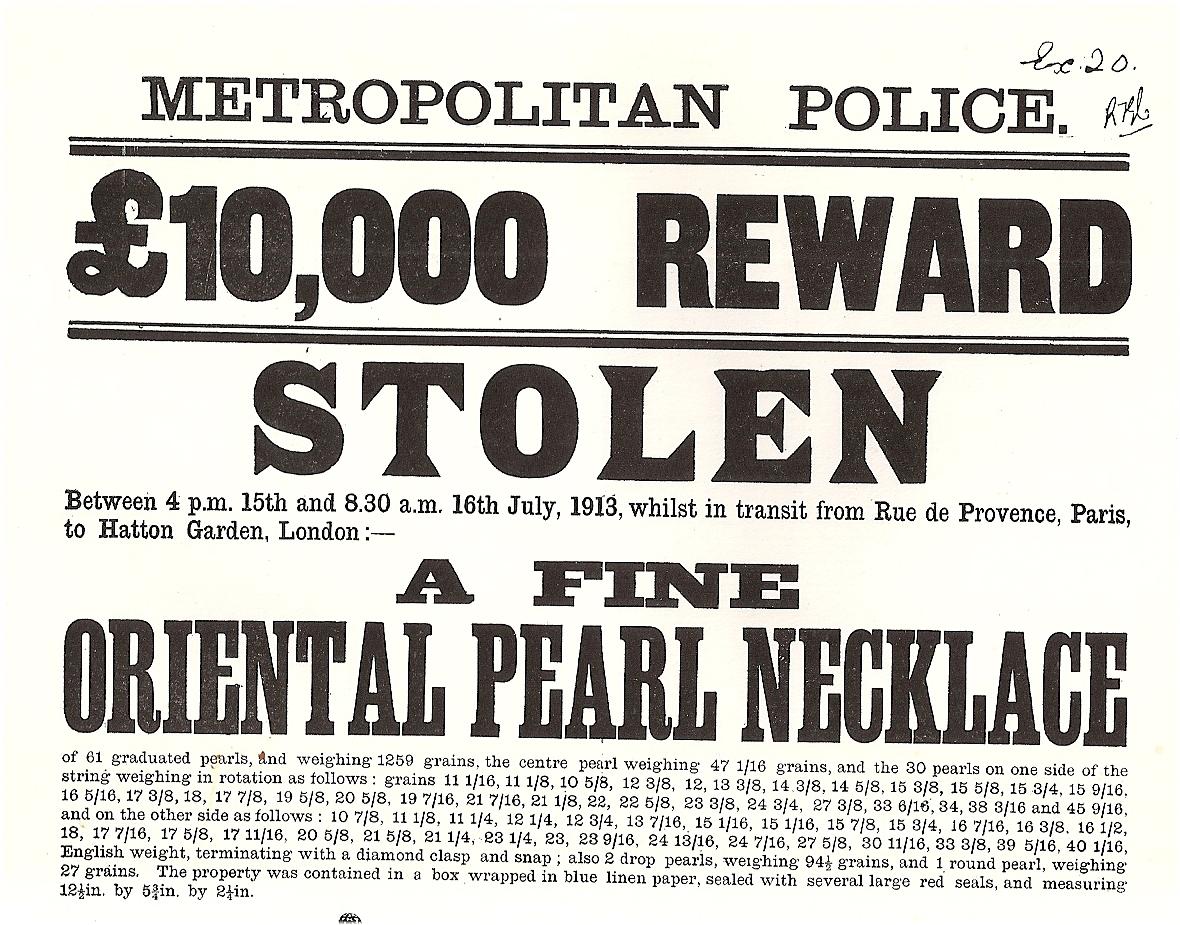
THE GREAT PEARL ROBBERY OF 1913
THE GREAT PEARL ROBBERY of 1913
A recent lecture that I attended at the Society of Jewellery Historians at Burlington House, given by Nigel Israel, touch upon the bizarre and intriguing robbery of what was considered to be at the time one of the world’s most valuable string of natural pearls.
The key players:
MASTER PEARL DEALER
Max Mayer was the most highly regarded and respected pearl merchant in the Garden (Hatton Garden). Mr Mayer had purchased the pearl necklace in Paris for the then astounding sum of £123,000. To put this figure into perspective it was a time when a loaf of bread would cost one penny.
He was hoping to sell it for £150,000. So why so valuable? These sixty-one perfectly matched and graded natural pearls were of the finest quality and had taken scores of men over ten years to collect. They were described as flawless and of a rosy delicate pink. Very desirable, very valuable.
MASTER CRIMINAL
Grizard was a fence. However he was a particularly astute one. He remained out of reach of the law, swanning through the Garden smoking a cigar to give him an air of respectability, whilst at the same time receiving stolen goods from his many followers.
To quote a Scotland Yard police report of the time, ‘He is a diamond merchant by trade, but has no established business premises. He does undoubtedly do a little business, but the greater portion of his time is taken up by organising crimes, and buying and disposing of stolen property. Much has been heard of him during the past fifteen years as having been connected with many serious crimes. A large number of statements made by prisoners are in our possession showing that they had disposed of their property to him, but unfortunately we have been unable to prosecute him for lack of corroborative evidence.’
This untouchable would use his masterly intelligence to meticulously plan and motivate his followers to carry out the most famous and bold theft of the early twentieth century.
MASTER DETECTIVE
Ex-Superintendent Alfred Leach had been for ten years the Inspector in charge of the Hatton Garden division and knew Cammi and his associates well. Leach had become famous by at one time arresting a pub full of criminals. However in 1908 he retired due to ill health and took a position as a private detective among the Underwriters of Lloyd’s.
He worked mainly for Price and Gibbs, who called him to investigate the stolen pearls.
THE CRIME
Mr Mayer had sent the pearls to Monsieur Henri Salomons . However no sale was made and the pearl necklace, together with three further pearls, were packaged and sent by ordinary post as not to attract unwanted attention, to:
Max Mayer, Esq., 88, Hatton Garden, London
On receiving the package Mr Mayer was horrified to find that the pearls had gone and in their place a string of eleven sugar cubes. The cubes weighed the same as the lost pearls and were used to waiver suspicion should the package be weighed again in transit.
Cammi’s minions had intercepted the package and carefully carried out the switch.
STREET URCHIN
A reward of £10,000 was posted. The police, Leach and two amateur detectives tightened the net around Cammi and his gang. What followed next, considering the amount of meticulous planning that had been involved, seems bizarre.
Mr Augustus George Horn, described as a piano forte back maker, whilst walking to work from his home in Islington noticed a small brown parcel lying in the gutter. He saw a couple nearby catching a bus, called out to them but with no response he placed the parcel in his pocket. Later, on his way to the Swan public house in Islington, he opened the parcel to find a matchbox full of what he thought were marbles. He allegedly gave one to a street urchin to play marbles with before depositing the remainder at the police station.
The question is who threw away the package and why?
LOST PEARLS
Of the sixty-one pearls only fifty-nine have ever been recovered.
The necklace was never to be sold as a single piece again. A few years after its recovery the necklace was divided into three items. One sold in London, one in Paris and the final part in New York.
Wouldn’t it be a fantastic idea to reunite the pearls……………..
FURTHER READING
‘The Great Pearl Robbery of 1913’ by Christmas Humphreys (1929), published by William Heinemann
THE PEARLS EXHIBITION
If you are interested in pearls I can do more than thoroughly recommend a visit to the Pearls exhibition at the Victoria & Albert Museum, London. The exhibition contains many of the World’s most famous pearls. My personal favourites are the Pearl of Asia and the Hope Pearl.
The exhibition runs until the 19th January 2014
For more details: http://www.vam.ac.uk/content/exhibitions/exhibition-pearls/
Share and Enjoy

Lost treasure
Being a keen gemmologist and jewellery historian, perhaps still retaining a little too much of the boy in my soul, the idea of lost treasure mesmerises me.
The scope of hidden and forgotten wonders lost in the fluidity of the world’s ever changing history can pull the most sceptical observer closer. The ‘Three Brothers’ jewel of Queen Elizabeth I, the bridesmaid brooches designed by William Burges and the Charles Du Vé eagle brooches designed for the twelve wedding train bearers of Queen Victoria, immediately come to mind.
If I may digress slightly from the concept of a lost complete jewel and wander into the romantic world of the diamond, and one diamond in particular; The Great Mogul.
The Great Mogul
Let us at once venture back in time to 1665, the first day of November in that year to be precise. The sixty year old French traveller, Jean-Baptiste Tavernier, had recently sold many splendid gems to The Great Mogul, Aurangzeb, the son of Shah Jehan, the fabled builder of the Taj Mahal. Tavernier had remained for two months at Jahanabad and was on that day making ready to leave. Aurangzeb pressed Tavernier to remain and witness the annual festival with the promise of allowing him a viewing of his magnificent gem collection. How could he refuse?
After the festivities on the 10th November he was summoned to the Palace and…….. I will allow Jean-Baptiste to give his account.
‘I found in this apartment Akail Khan, chief of the jewel treasury, who, when he saw us, commanded four of the imperial eunuchs to bring the jewels, which were carried in two large wooden trays lacquered with gold leaf, and covered with small cloths made expressly for the purpose – one of red and the other of green brocaded velvet. …….’
‘…..The first piece which Akil Khan placed in my hands was the great diamond, which is a round rose, very high at one side. At the basal margin it has a small notch and flaw inside. Its water is beautiful, and it weighs 3191/2 ratis, which are equal to 280 of our carats….. When Mir Jumla, who betrayed the King of Golkonda, his master, presented this stone to Shahjahan, to whose side he attached himself, it was then in the rough, and weighed 900 ratis, which are equivalent to 7871/2 carats; and it had several flaws’.
Aurangzeb had hired the Venetian Hortensio Borgio whilst in India to refashion the rough. In The Great Mogul’s eyes Borgio had made a mistake in trying to remove all the flaws and losing two thirds of the weight in the process. Auranbzeb refuse to pay him and instead fined Borgio 10,000 rupees.
This 280 carat diamond became known throughout history as the Great Mogul.
So where is this great diamond today and the large portion of rough that had been cut away?
It is probably that when Nadir Shah looted Delhi in 1739 he took the diamond back to Persia. If this is the case then The Great Mogul was likely to have been stolen on his death in 1747. It may have subsequently been re-cut to avoid detection.
There are those that believe that The Great Mogul, The Orloff and The Koh-I-Noor were all part of the same stone. The history is complex, and at times contradictory. For the interested reader, which much spare time on their hands, I would recommend the reading of Appendix I, in Volume II, of Tavernier’s Travels in India (Ball & Crooke).

